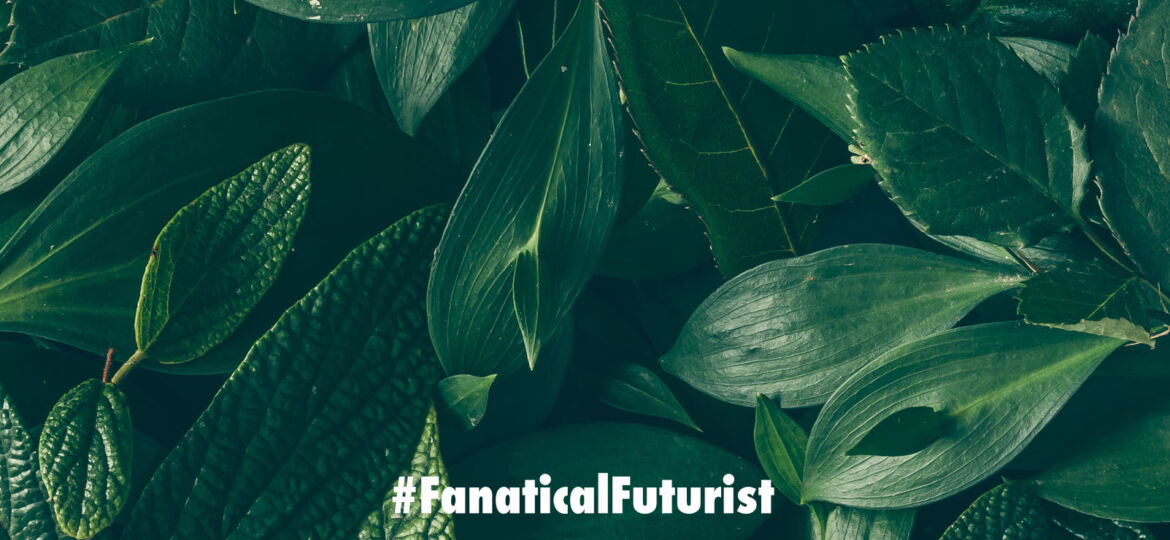
WHY THIS MATTERS IN BRIEF
Plants are a rich source of information – if you can communicate with them that is …
 Love the Exponential Future? Join our XPotential Community, future proof yourself with courses from XPotential University, connect, watch a keynote, or browse my blog.
Love the Exponential Future? Join our XPotential Community, future proof yourself with courses from XPotential University, connect, watch a keynote, or browse my blog.
In the past couple of years I’ve seen scientists make robot plants, plants that can send you spam E-Mails, glow, power electrical grids, and even grow on Mars. There are even programs that are finding new ways of bringing crops back from the dead, and turn plants everywhere into living sensor networks – mostly for the US military.
Now, in another milestone for plant kind, a team of scientists led by Nanyang Technological University (NTU) in Singapore has developed a device that can deliver electrical signals to and from plants, which for the first time opens the door to bi-directional communication with plants and new technologies that make use of them.
The NTU team developed their plant communication device by attaching a Conformable Electrode, a piece of conductive material, on the surface of a Venus flytrap plant using a soft and sticky adhesive known as hydrogel. With the electrode attached to the surface of the flytrap, researchers can achieve two things: Pick up electrical signals to monitor how the plant responds to its environment, and transmit electrical signals to the plant, to cause it to close its leaves.
Scientists have known for decades that plants emit electrical signals to sense and respond to their environment. The NTU research team believe that developing the ability to measure the electrical signals of plants could create opportunities for a range of useful applications, such as plant-based robots that can help to pick up fragile objects, or to help enhance food security by detecting diseases in crops early.
However, plants’ electrical signals are very weak, and can only be detected when the electrode makes good contact with plant surfaces. The hairy, waxy, and irregular surfaces of plants make it difficult for any thin-film electronic device to attach and achieve reliable signal transmission.
To overcome this challenge, the NTU team drew inspiration from the Electrocardiogram (ECG), which is used to detect heart abnormalities by measuring the electrical activity generated by the organ.
As a proof of concept, the scientists took their plant communication device and attached it to the surface of a Venus flytrap – a carnivorous plant with hairy leaf-lobes that close over insects when triggered.
The device has a diameter of 3 mm and is harmless to the plant. It does not affect the plant’s ability to perform photosynthesis while successfully detecting electrical signals from the plant. Using a smartphone to transmit electric pulses to the device at a specific frequency, the team elicited the Venus flytrap to close its leaves on demand, in just 1.3 seconds.
The researchers have also attached the Venus flytrap to a robotic arm and, through the smartphone and the communication device, stimulated its leaf to close and pick up a piece of wire half a millimeter in diameter. Which is as weird as it is awesome.
Their findings, published in the scientific journal Nature Electronics in January, demonstrate the prospects for the future design of plant-based technological systems, say the research team. Their approach could lead to the creation of more sensitive robot grippers to pick up fragile objects that may be harmed by current rigid ones.
The research team envisions a future where farmers can take preventive steps to protect their crops, using the plant communication device they have developed.
“Climate change is threatening food security around the world. By monitoring the plants’ electrical signals, we may be able to detect possible distress signals and abnormalities. When used for agriculture purpose, farmers may find out when a disease is in progress, even before full‑blown symptoms appear on the crops, such as yellowed leaves. This may provide us the opportunity to act quickly to maximize crop yield for the population,” said Chen Xiaodong, the lead author.
“The thermogel-based material behaves like water in its liquid state, meaning that the adhesive layer can conform to the shape of the plant before it turns into a gel. When tested on hairy stems of the sunflower for example, this improved version of the plant communication device achieved four to five times the adhesive strength of common hydrogel and recorded significantly stronger signals and less background noise,” said co-lead author Professor Chen Xiaodong.
“The device can now stick to more types of plant surfaces, and more securely so, marking an important step forward in the field of plant electrophysiology. It opens up new opportunities for plant-based technologies,” he added.
Moving forward, the NTU team is looking to devise other applications using the improved version of their plant communication device.
















